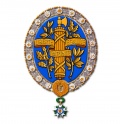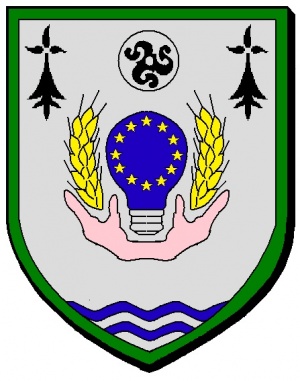Saint-Coulitz: Difference between revisions
Knorrepoes (talk | contribs) m (Text replacement - "Literature : " to "'''Literature''': ") |
Knorrepoes (talk | contribs) m (Text replacement - "↵{{media}}" to " {{fr1}} {{media1}}") |
||
| Line 27: | Line 27: | ||
[[Civic Heraldry Literature - France|'''Literature''']]: Image from http://www.armorialdefrance.fr | [[Civic Heraldry Literature - France|'''Literature''']]: Image from http://www.armorialdefrance.fr | ||
{{ | {{fr1}} | ||
{{media1}}; background from municipal website | |||
[[Category:French Municipalities S]] | [[Category:French Municipalities S]] | ||
[[Category:Finistère]] | [[Category:Finistère]] | ||
Revision as of 13:26, 26 December 2022
French heraldry portal
This page is part of the French heraldry portal |
Heraldry of the World |
|
French heraldry:
Overseas territories:
|
Selected collector's items from France:
|
SAINT-COULITZ
Département : Finistère
| French |
D'argent à deux mains de carnation posées de profil, adossées, ouvertes vers le chef et reliées par les poignets, d'où meuvent deux épis de blé courbés et affrontés d'or, entourant une ampoule électrique posée en pal, le culot d'argent en bas, le bulbe d'azur surchargé de douze étoiles d'or ordonnées en orle, l'ampoule surmontée d'un besant du champ chargé d'un triskel de sable, l'ensemble accompagné de deux mouchetures d'hermine de sable en chef et d'une jumelle ondée d'azur en pointe; le tout enfermé dans une filière de sinople. |
| English | No blazon/translation known. Please click here to send your (heraldic !) blazon or translation |
Origin/meaning
The arms date from around 1191/2.
The lightbulb refers to the fact that the town was the 3rd town in France and the first in the Western part of the country that was connected to electricity, due to a hydro-electric power station built in 1887. The stars and blue are taken from the European Union flag.
The wheatears refer to agriculture, the two hands symbolise welcome. The base refers to the Aulne river. The triskelion and the ermine tails refer to Bretagne.
Literature: Image from http://www.armorialdefrance.fr
Template:Fr1 Template:Media1; background from municipal website


